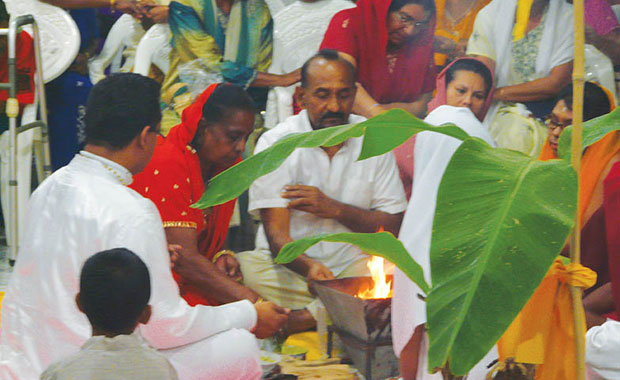Celebrating Lord Shiva’s great night
Lord Shiva’s great night celebrations showcase the rich culture and diversity of the island.

Lord Shiva is the divine Destroyer or Transformer among the Trinity of Hindu Gods. He is often depicted with a cobra coiled around his neck, symbolising the power he has over the deadliest of creatures. Lord Shiva is also portrayed with a crescent-shaped moon on the left side of his head. The moon represents the cycle of time through which creation evolves, from beginning to end. Lord Shiva is usually worshipped in the form of an iconic lingam, a sacred oval pillar of stone, demonstrating that God exists in an abstract form. He is depicted as an omniscient yogi, immersed in deep meditation, who resides on Mount Kailash. Lord Shiva is also portrayed as the Cosmic Dancer who performs the divine dance, signifying the cosmic cycles of creation and destruction, as well as the eternal rhythm of birth and death.
During Shivaratri, pooja (ceremonial worship) is performed in honour of Lord Shiva. Devotees abstain from eating and drinking during preparations for the pooja, which begins at sunset and ends at sunrise. From nightfall to sunrise, devotees flock to temples in reverence to Lord Shiva. Women pray for the well-being of their family members, married women pray for matrimonial bliss and unmarried girls pray for a good husband. It is believed that the grace of Lord Shiva is at its maximum on this auspicious night. Devotees offer libations by bathing the lingam with jal (water), milk, honey, dahee (curd), ghee (clarified butter) and sugar-cane juice. Other offerings to the lingam include wood apple or bael leaves (Aeglemarmelos) and fruits and flowers. Offerings are also made to other deities in the temple, as well as to the pundit (Hindu priest), who directs the proceedings.
A vigil is maintained all night during which bhajans and kirtans (hymns and praises) are sung to the accompaniment of music. The temple reverberates with the sounds of gongs, bells, horns and chants of “Om Namah Shivaya,” meaning “Praise the name of Lord Shiva.” Devotees circumambulate the lingam and make their offerings to it. After this, their fast could be broken. Hindus who participate in Carnival are then free to party and masquerade.











Comments.